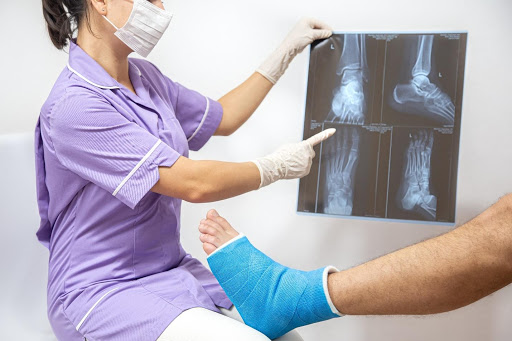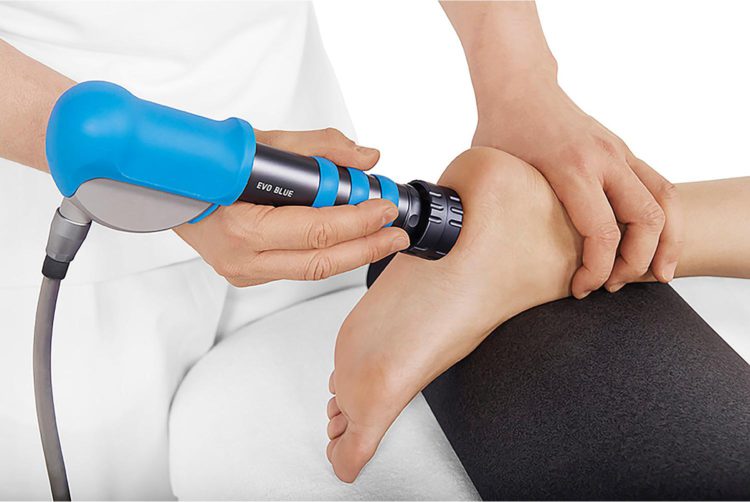An ankle sprain occurs when the ankle is twisted in a manner that harms one or more than one ligament of the ankle which may be caused while running or walking and is very common in people who play sports hence, require a sports physiotherapist.
You can get rid of an ankle sprain from home but sometimes, ill-treatment or mishap while exercises can be very severe and cause chronic pain for which, be assured to visit a sports physiotherapist first.
What causes Ankle to Sprain?
When the ankle is stretched or moved along in a way that exhausts its elasticity than usually can damage the ligaments and tendons of the ankle.
- Aggressively going up the stairs
- Keeping your ankle weak or excessively stiff while getting off the stairs
- Planting your foot, the wrong way while running
- Stepping on uneven surfaces
- Losing your balance while walking during winters
- Games like football, basketball, rugby, badminton, tennis are highly prone games to sprain your ankle.
What are the symptoms of an ankle sprain?
It is very common to misunderstand mild ankle twists with major ankle sprains or even fractures. Some common ankle sprain symptoms are:
- Sudden pain after twisting your ankle
- Swelling
- Bruising
- Inability to walk
- Tender feeling on touch
- Limited motion of the ankle
A fractured ankle may show symptoms like:
- Pain and swelling that does not reduce after a day or two
- Inability to bear weight on the injured leg
- Numbness or weakness
- Reduced circulation
How can you get rid of ankle sprains?
To ease the pain of a sprained ankle, you will need to first focus on controlling the swelling to help the healing process. Book an appointment for physiotherapy in Kanata to know the severity of the sprained ankle and to follow the right path towards your recovery.
- R.I.C.E.
- Rest: stay off the injured area and get ample rest to let the body play its role in the self-healing process.
- Ice: Apply an ice pack or a bag of frozen peas or corn on the affected area of the ankle 3-5 times a day for no more than 20 minutes to control the swelling and reduce pain.
- Compression: This process involves pressure application on the affected ankle and its surrounding areas. The best way to do so is by wrapping an elastic bandage around your foot from the toes up to mid-calf. This will help to reduce the swelling.
(Make sure to apply pressure that regulates blood flow normally)
- Elevation: Keep your ankle as much elevated as you can to avoid the accumulation of blood and other fluids in the joint. This shall ease the swelling, reduce pain and speed up the recovery. Rest your foot over propped-up pillows at an angle higher than the heart.
- Heat therapy
It is a common dilemma for people between ice packs and heat packs. Heat therapy comes into play only and only after the swelling is gone (with the help of ice packs). However, because the swelling is gone, it does not mean that the ankle is ready for a run. Heat increases blood flow necessary to speed up the healing as it contains oxygen, WBCs and other nutrients essential to repair the wound.
Heat also helps to relax your muscles and release the tension necessary to ease pain and let blood flow through thoroughly.
- Physiotherapy
It is always recommended to visit a physiotherapist especially a sports physiotherapist to have your ankle examined and identify the exact injured tissue of the ankle. Sports physiotherapists can provide a customized exercise plan that is suitable just for you.
Physiotherapy helps relieve the tension in the muscles by gently massaging the affected area that can allow you to walk at ease. Apart from that, the regularity required to follow R.I.C.E., heat therapy, exercises as well as massage therapy can not be skipped at the physiotherapy clinic in Kanata as you are under the complete supervision of the sports physiotherapist!
- Exercises & stretches
Stretching becomes very important as the ankle is at complete rest which can weaken the tissues around the ankle from disuse. Stretching keeps the muscles strong and flexible. This also enables the blood to circulate well in every area of the ankle.
It is recommended to stretch at least three times a day by:
- Flexing the foot in the forward and backward direction.
- Rotating the ankle clockwise and anti-clockwise.
Eventually, after a few exercise therapy sessions as the pain is reduced, you must begin exercising at home that can help you restore balance and strength. It is very common to sprain the same ankle again due to a lack of stability in the ligaments and muscles of the ankle.
A set of 15 minutes exercises every alternate day.
- On a low step, stand with the heels hanging backwards over the edge. Drop the heels slightly, and hold the position for a few seconds. Then, elevate the heels above the toes.
- Balance on one foot for 30–60 seconds, then switch sides, to promote equal strength in both joints.
- Loop an elastic exercise band under the foot for gentle resistance. Move the ankle clockwise, then counter-clockwise.
- Play catch while balancing on one leg, then the other.
- Epsom Salt
After exercises, if you feel sore in the ankle, you can soak your ankle in a warm bath with Epsom salt in it. Epsom salt will help soothe your sore muscles and tissues and will help relieve the stiffness in the joints further promoting blood circulation. It is advised to follow an Epsom salt bath 1-2 times a day.
REMEMBER: Visit a sports physiotherapist at the earliest if you have any of these symptoms:
- Severe pain, bruising, or severe swelling
- Bleeding, numbness, or change in colour of the affected area
- Your ankle looks deformed or seems dislocated
- You can’t put any weight on it
If improvement is not observed, visit a sports physiotherapist and follow a proper course to get rid of ankle sprains.
For ankle sprain sports physiotherapy in Kanata, book an appointment with us at PhysioExperts.
For any concerns, Call Us: 613-672-6000 or drop us an email: info@physioexperts.caFollow Us Facebook | Twitter |Instagram



